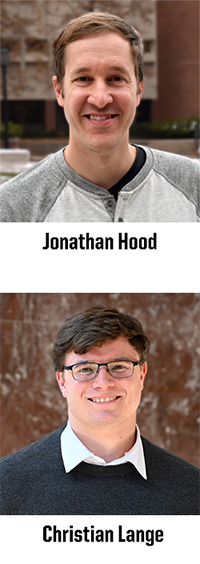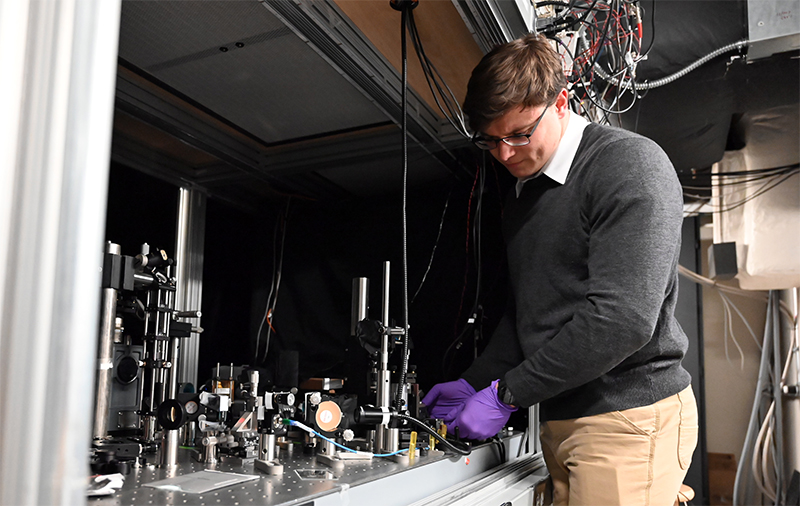Purdue College of Science team’s quantum optics discovery featured in Nature Physics
2024-02-26
Writer(s): Steve Scherer

Jonathan D. Hood, assistant professor in the Department of Chemistry and the Department of Physics and Astronomy, led a team of Purdue scientists from both departments whose research was recently published and featured in Nature Physics.
This quantum optics research builds on how fluorescing organic molecules interact with each other using photons, forming a collective system that has enhanced interactions with light. The rate of fluorescence can speed up or slowdown in the phenomena of ‘superradiance’ and ‘subradiance.’
“To form a collective system, molecules must fluoresce with identical wavelengths of light. Our research has shown that a strong laser can be used to tune the molecules' fluorescence until they resonate with each other, forming a collective system,” explained Christian Lange, physics graduate student and the first author on the paper.
Because these collective systems have enhanced interactions with photons, this discovery brings us one step closer to complete quantum control of light, including the perfect absorption and emission of light and the creation of exotic types of quantum light.
“The most important step is to make larger collective systems with stronger interactions between molecules. This can be done by tuning many molecules until they resonate with each other, and by engineering nanophotonic devices that strengthen the interactions between molecules,” Lange added.
In addition to Hood, investigators include professors Libai Huang (chemistry), Valentin Walther (chemistry and physics); and Hood’s graduate students Christian Lange (physics) and Emma Daggett (chemistry).
The research is funded by the National Science Foundation.

Physics graduate student Christian Lange working in Purdue University Brown Laboratory of Chemistry.
Related links:
Nature Physics article:
Nature Physics feature story: